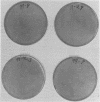Abstract
Sensitized mouse spleen cells decrease the spread of herpes simplex virus infection in cell culture lines derived from human and murine tissues. These washed, sensitized cells act alone and additively in combination with antibody to diminish the ability of single virus-infected cells to spread infection to contiguous cells. This control of infection is not species specific, unlike interferon, and appears to be distinct from the effect of antibody. Lymphotoxin was not detected in this lymphocyte-mediated response. This control of herpes simplex virus infection in vitro by sensitized lymphoid cells is immunologically specific; spleen cells from donor animals immunized with a heterotypic virus do not cause herpesvirus plaque size reduction. The ratio of spleen cells from immunized animals to target monolayer cells needed to produce this effect is > 4:1. Plaque size reduction of herpes simplex virus by spleen cells requires intact, immune, non-glass-adhering lymphoid cells.
Full text
PDF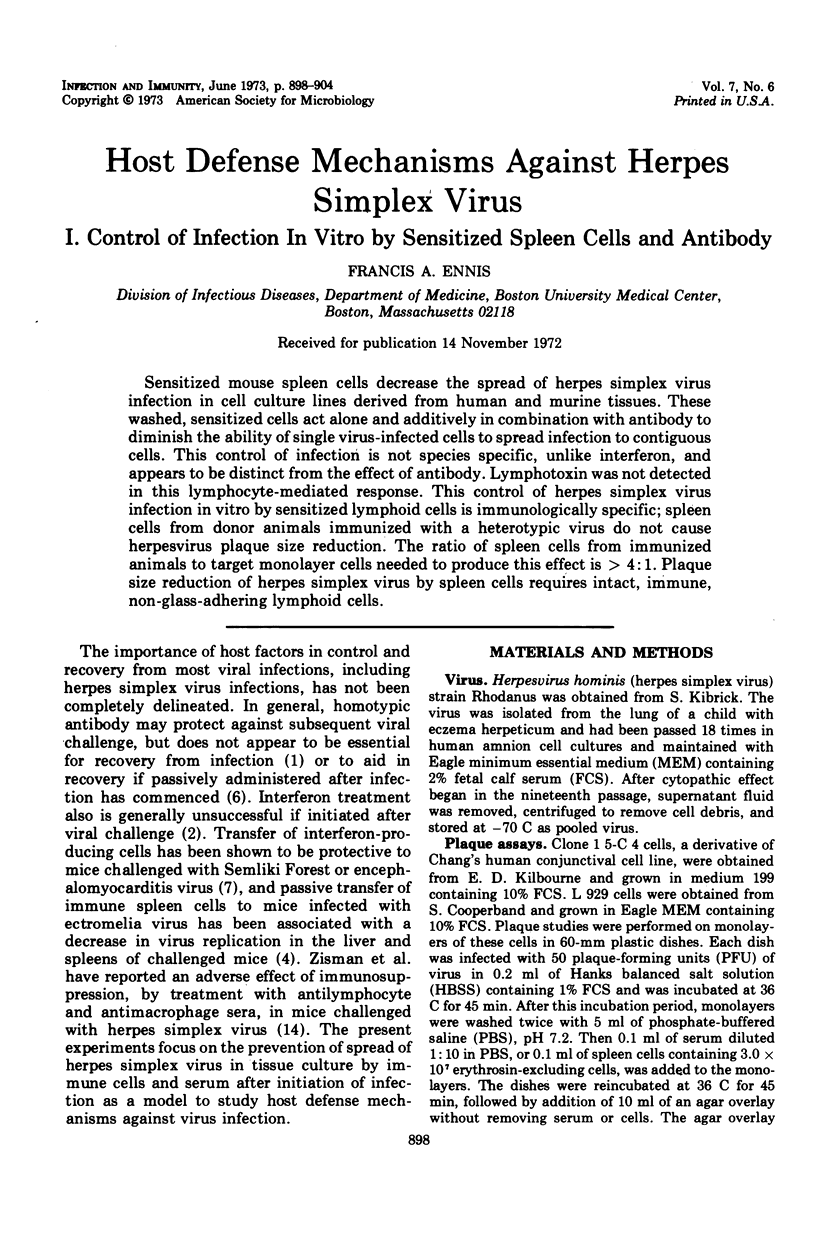
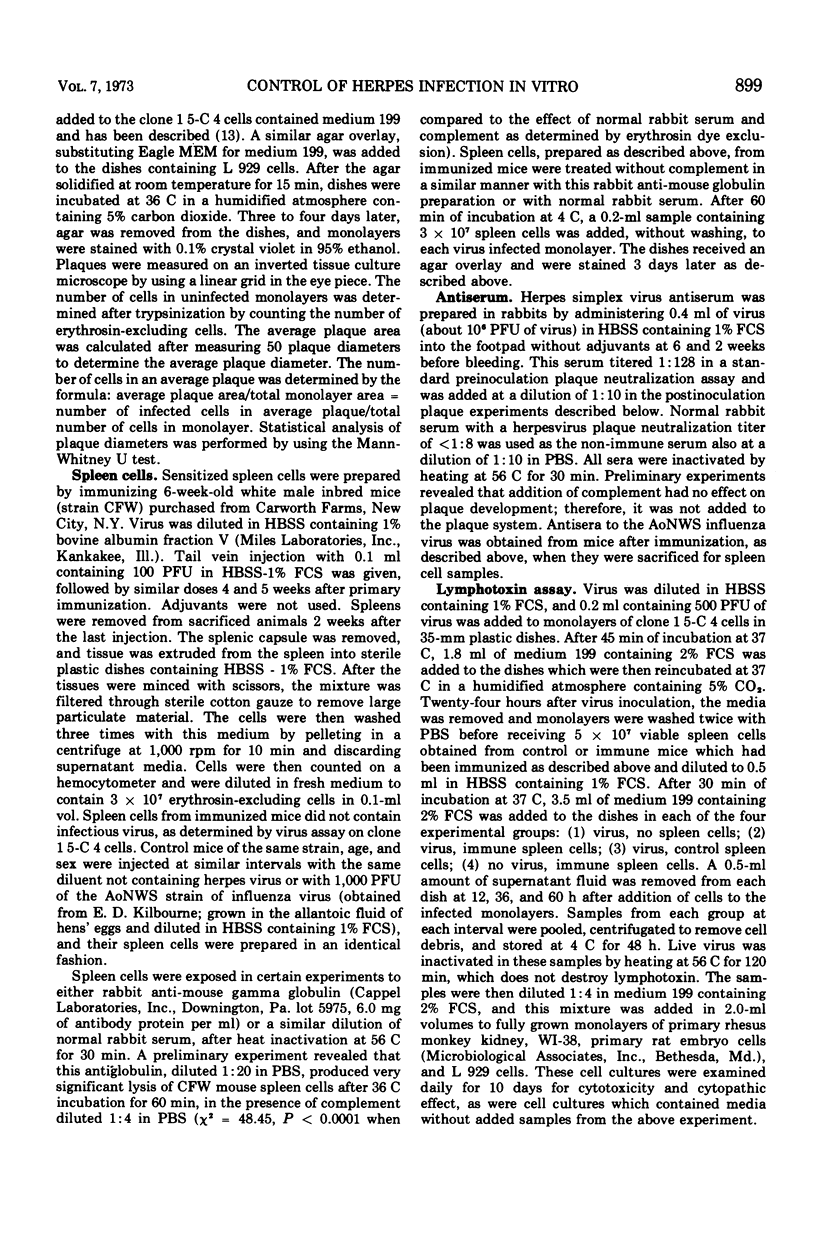
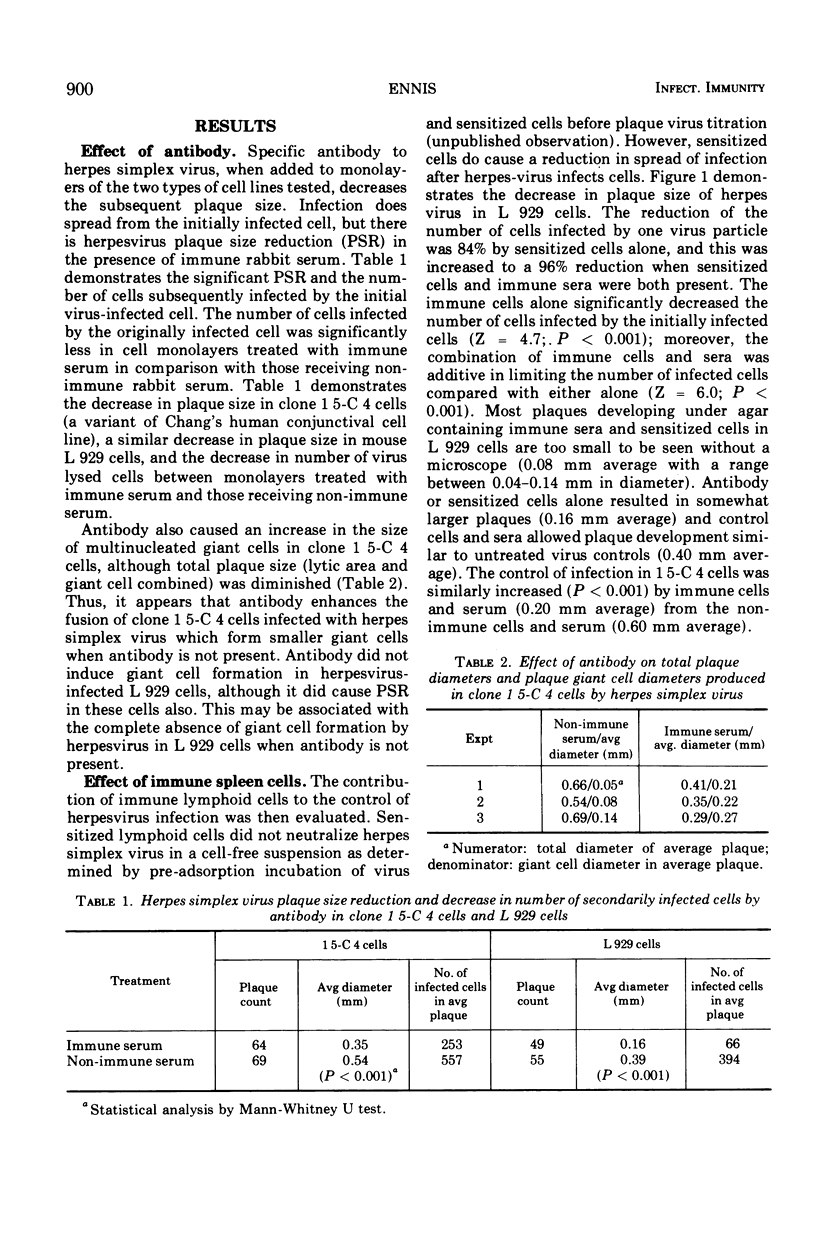
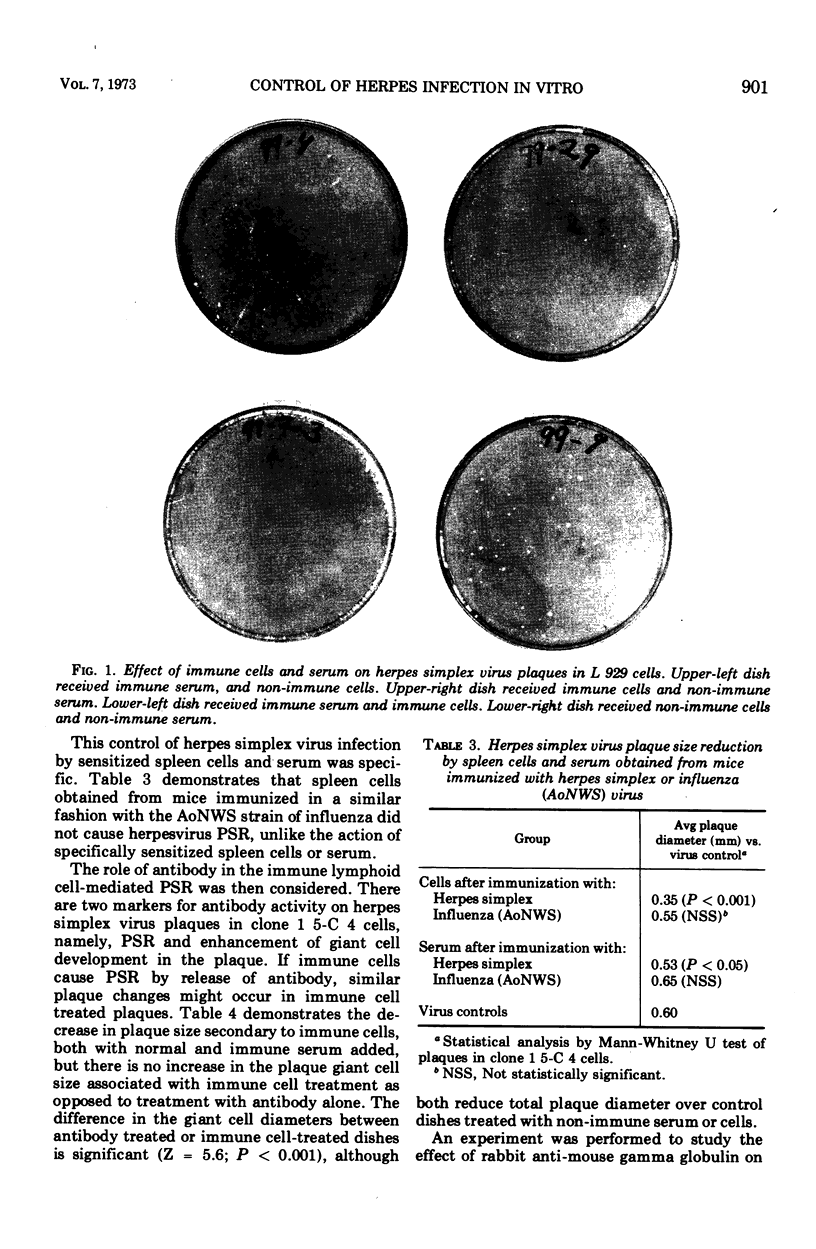
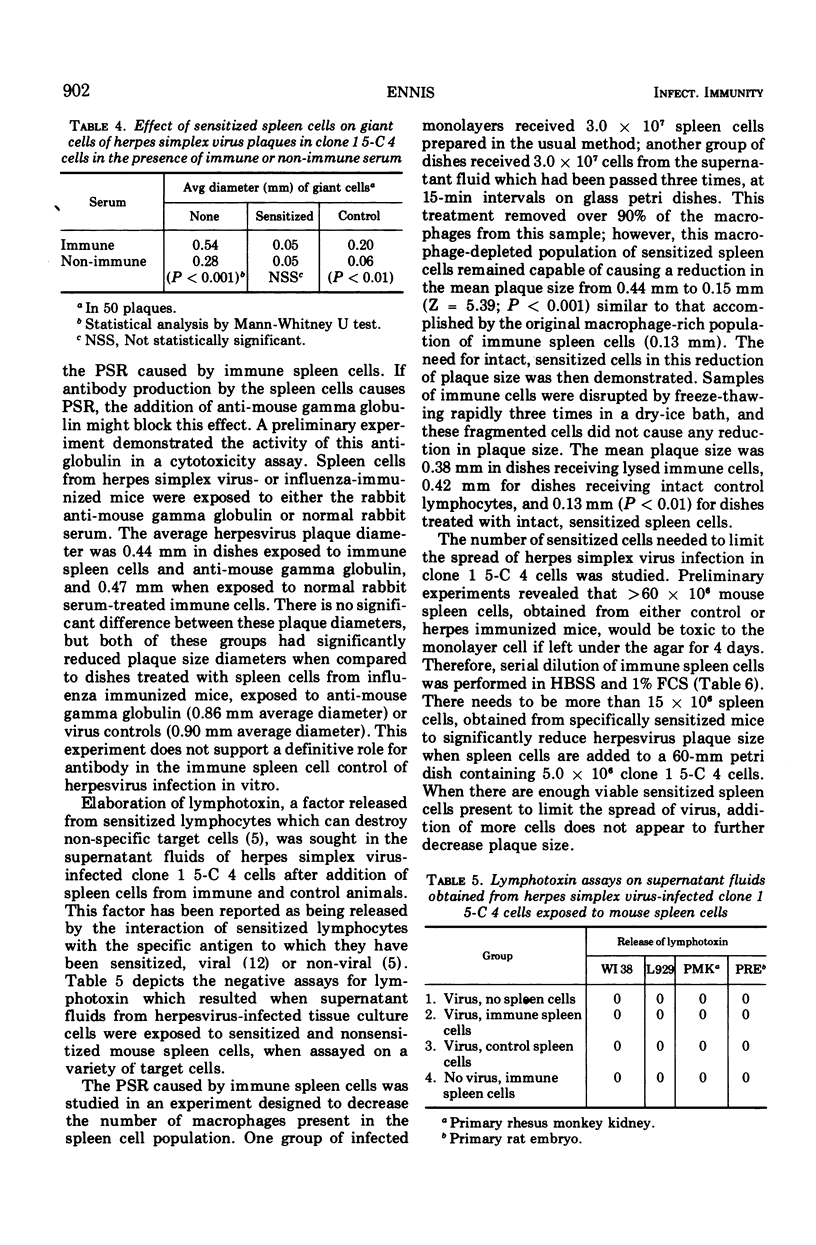
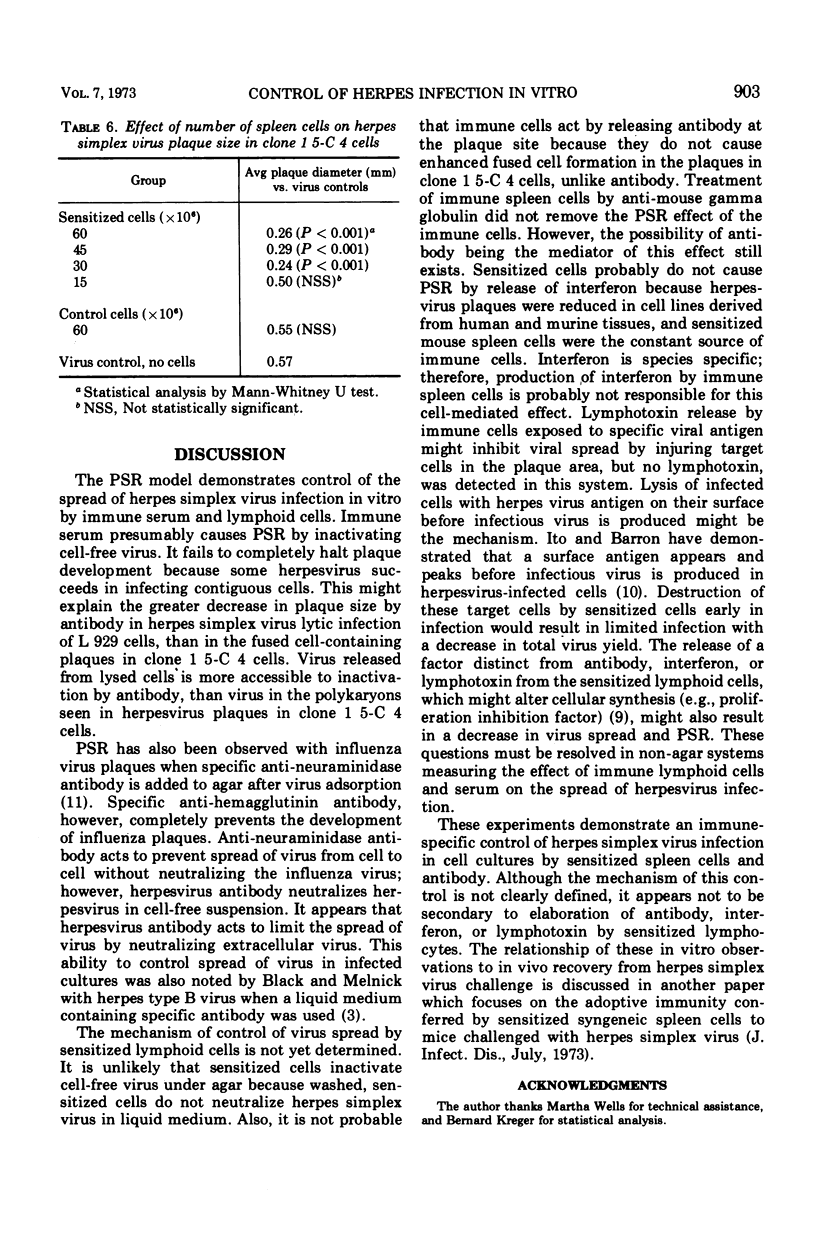
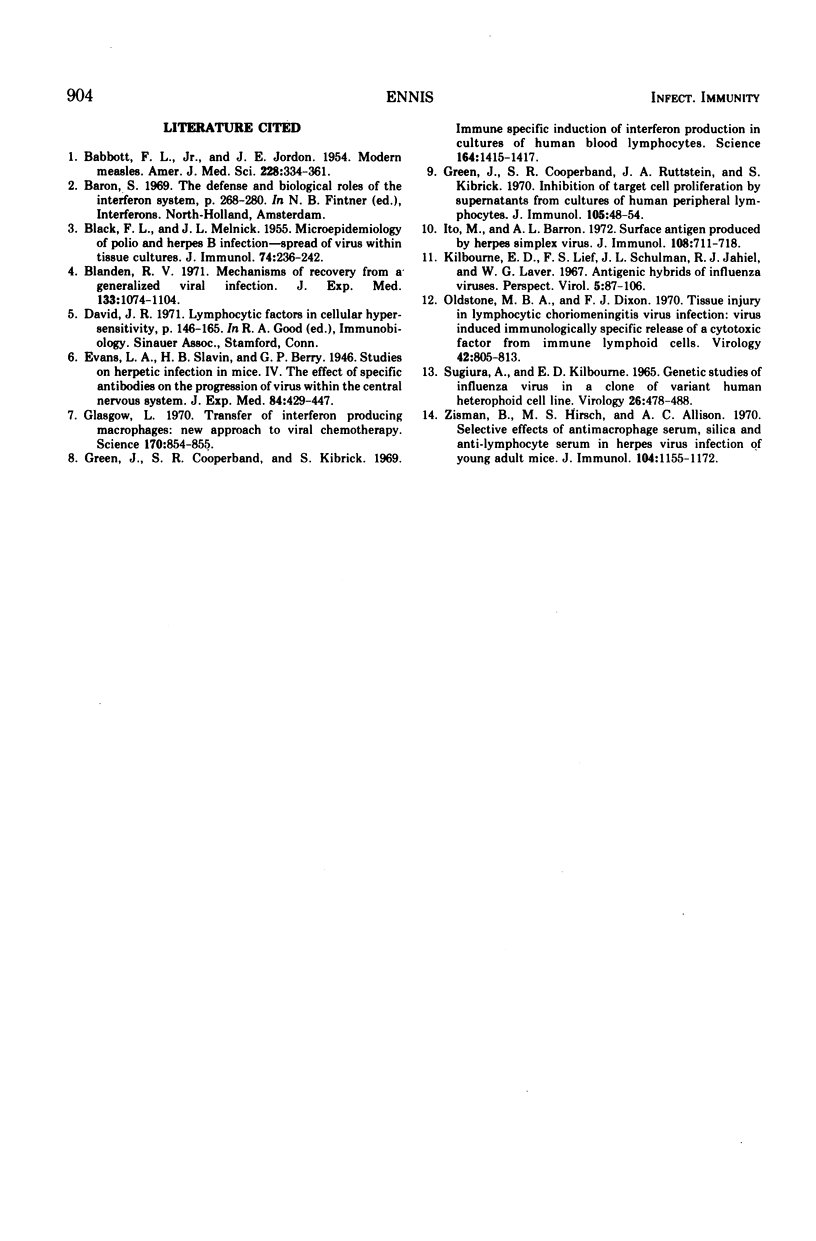
Images in this article
Selected References
These references are in PubMed. This may not be the complete list of references from this article.
- BABBOTT F. L., Jr, GORDON J. E. Modern measles. Am J Med Sci. 1954 Sep;228(3):334–361. [PubMed] [Google Scholar]
- BLACK F. L., MELNICK J. L. Microepidemiology of poliomyelitis and herpes-B infections: spread of the viruses within tissue cultures. J Immunol. 1955 Mar;74(3):236–242. [PubMed] [Google Scholar]
- Blanden R. V. Mechanisms of recovery from a generalized viral infection: mousepox. 3. Regression infectious foci. J Exp Med. 1971 May 1;133(5):1090–1104. doi: 10.1084/jem.133.5.1090. [DOI] [PMC free article] [PubMed] [Google Scholar]
- Glasgow L. A. Transfer of interferon-producing macrophages: new approach to viral chemotherapy. Science. 1970 Nov 20;170(3960):854–856. doi: 10.1126/science.170.3960.854. [DOI] [PubMed] [Google Scholar]
- Green J. A., Cooperband S. R., Kibrick S. Immune specific induction of interferon production in cultures of human blood lymphocytes. Science. 1969 Jun 20;164(3886):1415–1417. doi: 10.1126/science.164.3886.1415. [DOI] [PubMed] [Google Scholar]
- Green J. A., Cooperband S. R., Rutstein J. A., Kibrick S. Inhibition of target cell proliferation by supernatants from cultures of human peripheral lymphocytes. J Immunol. 1970 Jul;105(1):48–54. [PubMed] [Google Scholar]
- Ito M., Barron A. L. Surface antigen produced by herpes simplex virus (HSV). J Immunol. 1972 Mar;108(3):711–718. [PubMed] [Google Scholar]
- Oldstone M. B., Dixon F. J. Tissue injury in lymphocytic choriomeningitis viral infection: virus-induced immunologically specific release of a cytotoxic factor from immune lymphoid cells. Virology. 1970 Dec;42(4):805–813. doi: 10.1016/0042-6822(70)90330-2. [DOI] [PubMed] [Google Scholar]
- SUGIURA A., KILBOURNE E. D. GENETIC STUDIES OF INFLUENZA VIRUSES. II. PLAQUE FORMATION BY INFLUENZA VIRUSES IN A CLONE OF A VARIANT HUMAN HETEROPLOID CELL LINE. Virology. 1965 Jul;26:478–488. doi: 10.1016/0042-6822(65)90010-3. [DOI] [PubMed] [Google Scholar]
- Zisman B., Hirsch M. S., Allison A. C. Selective effects of anti-macrophage serum, silica and anti-lymphocyte serum on pathogenesis of herpes virus infection of young adult mice. J Immunol. 1970 May;104(5):1155–1159. [PubMed] [Google Scholar]



